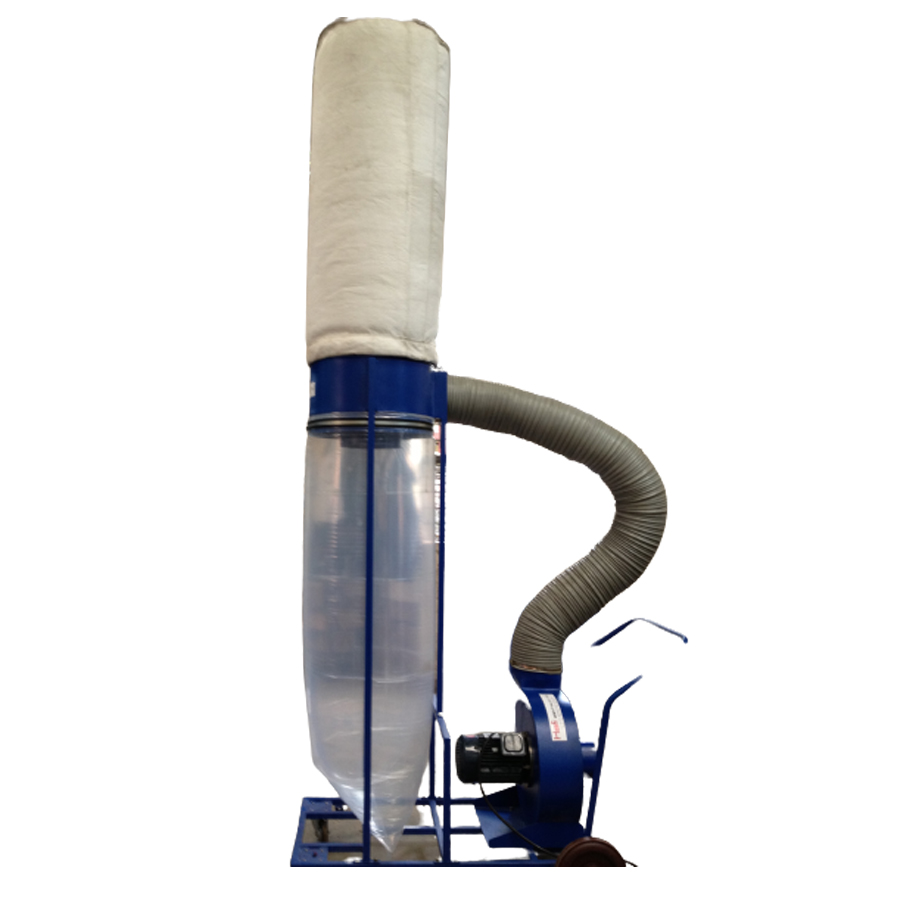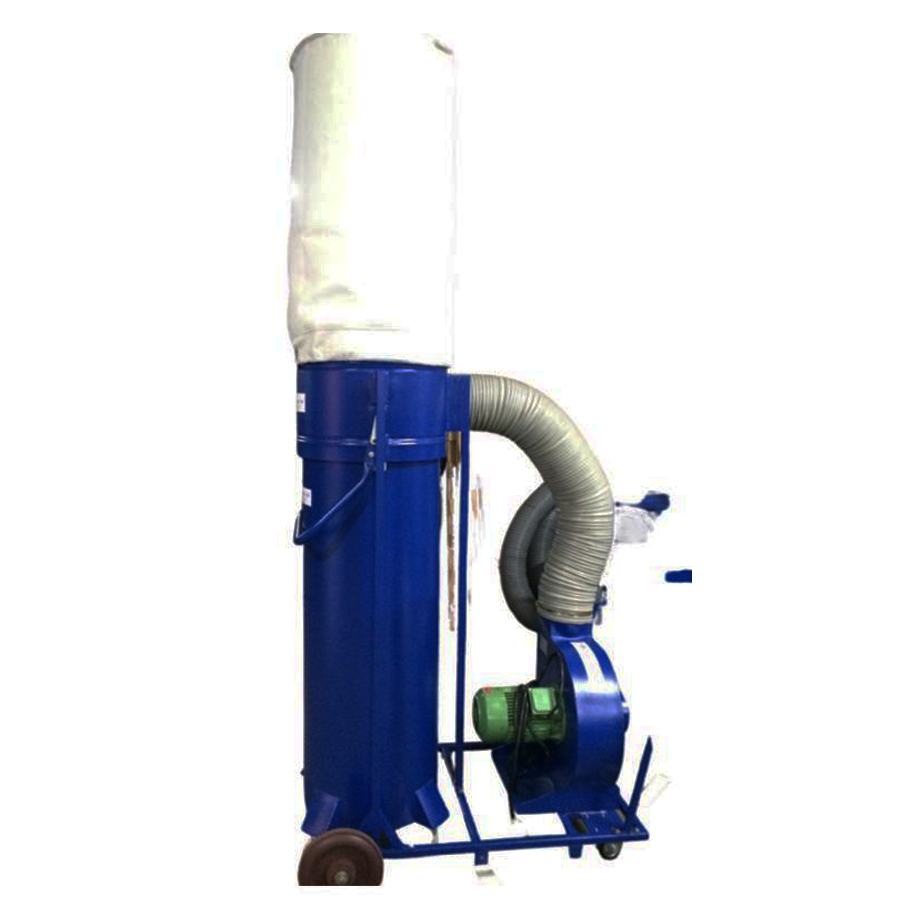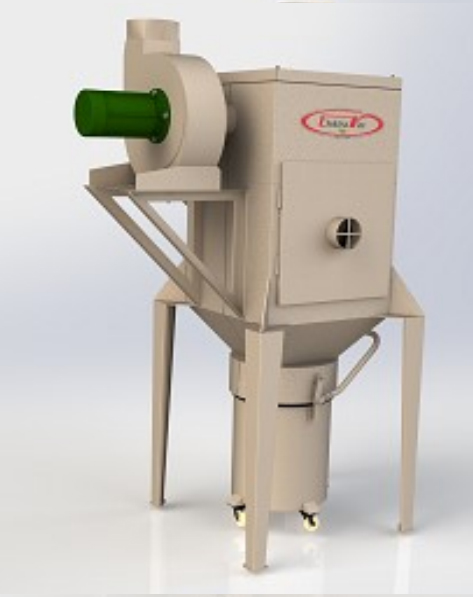



MANUFACTURERS AND SUPPLIER OF A QUALITATIVE RANGE OF INDUSTRIAL VACUUM CLEANER
Hafi Elektra introduced and started manufacturing Suction Unit required for Textile Industry since 1988. More than three decades of manufacturing experience and in house technical know-how capabilities, Market Understandings and looking after potential opportunities and challenges in the Dedusting as well as Manual Cleaning areas specially for the industrial applications and Solutions, Hafi designed and developed wide range of Equipment.
Hafi Elektra makes Hafi Elektra - Centralized Vacuum Cleaning Systems, Industrial Vacuum Cleaners, Dust Extractors, Fume Extractors, Flux Recovery Unit, Coolant Recycling Units, Commercial Cleaning Equipment etc. are taking care requirement of every Segment in Industrial as well as Housekeeping Cleaning etc.
Hafi Elektra also manufactures Rotary Vane Pumps & Multistage Blowers required for the Vacuum Cleaners. We have supplied machines as per the customer's need and their specifications for the turnkey projects, as the underlined motto of our company is to not just sell machines but cleaning solutions.
DUST & CHIP EXTRACTORS :
Dust and chip extractors are essential pieces of equipment in woodworking, metalworking, and various other industries where dust, chips, and debris are generated during the manufacturing or machining process. These extractors are designed to remove and collect dust particles, wood chips, metal shavings, and other airborne particles to maintain a clean and safe working environment.
Key Features of Dust and Chip Extractors :
1. Purpose : Dust and chip extractors serve the primary purpose of improving air quality and reducing the risk of fire or explosions in industrial settings. They help protect workers from respiratory problems and create a cleaner workspace.
2. Components : A typical dust and chip extractor consists of a suction unit, a filter or bag system, and a collection bin. The suction unit generates the airflow needed to capture particles, while the filter or bag system traps and separates the particles from the air. The collected debris is then deposited into a collection bin for disposal.
3. Filtration : The quality of filtration is a critical factor in dust and chip extractors. HEPA filters are often used to capture fine dust particles, while larger chips and debris are collected in a separate container.
4. Hose and Ductwork : Dust extractors are typically connected to machinery and workstations through hoses and ductwork. Proper sizing and placement of these components are essential for effective dust collection.
5. Mobility : Some extractors are stationary, while others are portable with wheels for easy maneuverability. Portable units are convenient when you need to move the extractor to different work areas.
6. Noise Level : Dust and chip extractors can be noisy, so it's essential to consider noise levels when choosing one for your workspace. Some models come with noise-reduction features.
7. Safety : Proper maintenance and regular cleaning of the extractor are essential for safety and performance. Emptying the collection bin and replacing filters or bags when they become full or clogged is crucial.
8. Compliance : In many countries, there are regulations and standards regarding workplace air quality and dust control. Ensure that your dust and chip extractor complies with these regulations.
9. Size and Capacity : Choose an extractor with an appropriate size and capacity for your specific needs. The size of your workshop, the types of materials you work with, and the amount of dust and chips generated will all influence your choice.
10. Cost : Dust and chip extractors vary widely in price, so consider your budget when selecting one. Remember that investing in a quality extractor can lead to better long-term performance and reduced maintenance costs.
Types of Dust and Chip Extractors :
Dust and chip extractors, also known as dust collectors or dust collection systems, are essential tools in various industries and woodworking shops to help remove dust, chips, and other debris generated during manufacturing processes. These systems come in various types and sizes to accommodate different applications and levels of dust/chip production. Here are some common types of dust and chip extractors :
1. Single-Stage Dust Collectors :
» Portable Dust Collectors : These are small, mobile units designed for light-duty use, typically in small workshops or for portable power tools. They use a single-stage filtration system to capture larger particles and some fine dust.
» Wall-Mounted Dust Collectors : Wall-mounted units are space-saving options that can be attached to a wall. They are suitable for small to medium-sized shops and offer better dust collection compared to portable units.
2. Two-Stage Dust Collectors :
» Cyclone Dust Collectors : Cyclone collectors use a two-stage filtration process. The first stage involves a cyclonic separator that separates large particles and chips from the air stream before sending the remaining finer dust to the second-stage filtration. Cyclone collectors are efficient and suitable for medium to large workshops.
» Canister or Cartridge Collectors : These collectors use a pleated filter cartridge or canister as the second-stage filtration. They are efficient in capturing fine dust and are commonly found in larger workshops.
3. Wet Dust Collectors :
» Wet Dust Collectors or Wet Scrubbers : These collectors use water or other liquid substances to trap and remove dust particles from the air. They are often used in situations where dry dust collection may not be suitable, such as when dealing with combustible dust or hazardous materials.
4. Oil Mist Collectors :
» Oil Mist Collectors : These collectors are specifically designed for capturing and removing oil mist, smoke, and other airborne contaminants generated by metalworking machines like CNC machining centers. They help maintain air quality and protect equipment.
5. Portable Air Cleaners :
» Portable Air Cleaners : While not traditional dust collectors, portable air cleaners are used to purify the air in smaller spaces, such as offices, classrooms, or small workshops. They can help reduce airborne dust and improve indoor air quality.
Maintenance of Dust and Chip Extractors :
Maintenance of dust and chip extractors is essential to ensure they continue to function efficiently and safely. Regular maintenance helps prevent clogs, reduce the risk of fire hazards, and prolong the life of the equipment. Here are some general maintenance steps for dust and chip extractors:
1. Safety First : Before performing any maintenance, make sure the extractor is turned off and unplugged to prevent accidents.
2. Inspection : Regularly inspect your dust and chip extractor for visible damage, loose or missing parts, and signs of wear and tear. Pay special attention to hoses, filters, and collection bags.
3. Clean or Replace Filters : The filters in your extractor are crucial for trapping dust and chips. Depending on the type of filter (e.g., HEPA, cartridge, bag), you may need to clean or replace them periodically. Follow the manufacturer's recommendations for filter maintenance.
4. Empty Collection Bags or Bins : When the collection bag or bin is full, empty it promptly to prevent airflow restrictions. If your extractor uses disposable bags, replace them as needed.
5. Check Hoses and Ductwork : Inspect hoses and ductwork for any obstructions, cracks, or leaks. Replace damaged hoses or connectors as necessary to maintain proper airflow.
6. Clean Interior Components : Periodically clean the interior components of the extractor, including the impeller, motor housing, and any internal ductwork. Dust and debris can accumulate and reduce efficiency over time.
7. Lubrication : Some extractors may have components that require lubrication. Refer to the manual for guidance on lubricating moving parts like bearings.
8. Tighten Loose Fasteners : Check and tighten any loose bolts, nuts, or fasteners on the extractor to ensure it remains secure and stable.
9. Electrical Components : Inspect the electrical components, such as cords and plugs, for damage. Replace any frayed or damaged cords immediately. Ensure that electrical connections are secure.
10. Grounding : Make sure your dust and chip extractor is properly grounded to reduce the risk of static electricity buildup and potential fire hazards.
11. Noise Reduction : If your extractor becomes noisy, inspect the impeller and fan blades for damage. A damaged impeller can create excessive noise and should be replaced.
12. Professional Maintenance : For more complex maintenance tasks or if you're unsure about any aspect of maintenance, consider hiring a professional technician to service your extractor periodically.
13. Safety Measures : Always wear appropriate personal protective equipment (PPE) when working with your extractor, including dust masks and safety goggles.
Remember that the frequency of maintenance tasks may vary depending on how often you use the extractor and the type of materials you're extracting. Following the manufacturer's recommendations and performing regular maintenance will help keep your dust and chip extractor in good working condition, ensuring it continues to provide effective dust and chip removal.
Application industries of Dust and Chip Extractors :
Dust and chip extractors, also known as dust collectors or dust extraction systems, are essential tools in various industries where the generation of dust, chips, and particulate matter is a common byproduct of their processes. These systems help improve air quality, maintain a clean working environment, and ensure the safety of workers by capturing and removing airborne particles. Here are some application industries where dust and chip extractors are commonly used:
1. Woodworking Industry : Sawdust and wood chips are generated during cutting, planning, sanding, and routing operations. Dust collectors help prevent respiratory issues and maintain a clean workspace.
2. Metalworking Industry : Metal shavings, grinding dust, and fumes are produced during machining, welding, and grinding processes. Dust and chip extractors help control exposure to harmful particles and maintain machine efficiency.
3. Automotive and Aerospace Manufacturing : These industries generate metal and composite dust during processes such as machining, welding, and painting. Dust collectors are used to protect workers and maintain product quality.
4. Pharmaceutical and Chemical Industry : Powder handling, blending, and granulation processes can create airborne particles that pose health and safety risks. Dust collectors help maintain a sterile and safe working environment.
5.Food Processing Industry : Flour, spices, sugar, and other food ingredients can generate dust during processing and packaging. Dust extraction systems are essential for maintaining product quality and hygiene.
6. Construction and Renovation : Construction sites produce dust from activities like cutting concrete, drywall sanding, and tile cutting. Portable dust extractors help minimize exposure and keep work areas clean.
7. Electronics and Semiconductor Manufacturing : Cleanrooms in these industries require strict control of airborne particles. Dust collectors are used to maintain clean environments for sensitive electronic components.
8. Pharmaceutical Packaging : During the packaging of pharmaceutical products, dust and debris can be generated. Dust and chip extractors ensure the cleanliness and integrity of the packaging process.
9.Textile Industry : Cotton, wool, and synthetic fibers produce airborne particles during textile processing. Dust collectors help maintain air quality and reduce fire hazards.
10. Mining and Quarrying : Dust and debris are generated during mining and quarrying operations. Dust extraction systems are used to protect workers from exposure to harmful dust and maintain air quality.
11. Agriculture : Grain handling, milling, and crop processing can produce dust. Dust collectors are used in agricultural facilities to prevent respiratory issues and maintain product quality.
12. Printing and Paper Industry : Paper dust, ink mist, and fumes are generated in printing and paper manufacturing processes. Dust collectors help maintain clean and safe working conditions.
Hafi Elektra stands as a leading name in the realm of industrial machinery, specializing in the design, manufacturing, and supply of top-notch dust extractors and chip extractors. With a commitment to excellence and innovation, Hafi Elektra has carved a niche for itself in the market, providing cutting-edge solutions for efficient dust and chip extraction in various industrial settings.
The dust extractors from Hafi Elektra are meticulously crafted to meet the highest standards of performance and durability. Employing state-of-the-art technology, these extractors ensure a clean and safe working environment by effectively capturing and removing airborne particles. Hafi Elektra's dedication to quality extends to its chip extractors as well, designed to handle the challenges posed by diverse machining processes.
What sets Hafi Elektra apart is not just the functionality of its products but also the emphasis on sleek and ergonomic design. The company understands the importance of aesthetics in the workplace, seamlessly integrating form and function in its machinery.
As a global supplier, Hafi Elektra takes pride in delivering reliable and cost-effective solutions to clients worldwide. With a customer-centric approach and a focus on continuous improvement, Hafi Elektra remains at the forefront of the industry, setting new benchmarks in the realm of dust and chip extraction technology.
TECHNICAL SPECIFICATION FOR DUST EXTRACTOR MODEL HE 100 (DE) :
| MODEL | HE 100 (DE) |
| TYPE | CENTRIFUGAL FAN |
| AIR FLOW | 1000 CMH ± 10% |
| VACUUM | 120 mm .WG ± 10% |
| SUCTION HOSE | 100 mm DIA |
| DRIVE | DIRECT |
| MOTOR | 0.75 HP / 3 PHASE / 415 V / 50 Hz. |
| FAN SPEED | 3000 R.P.M. |
| IMPELLER | DYNAMICALLY BALANCED |
| FILTERS | CARTRIDGE FILTER AT SUCTION SIDE |
| NOISE LEVEL | 70 TO 75 dB |
| CONTAINER CAPACITY | 40 LTRS. |
| COMPRESSED AIR | 4 TO 6 BAR |


